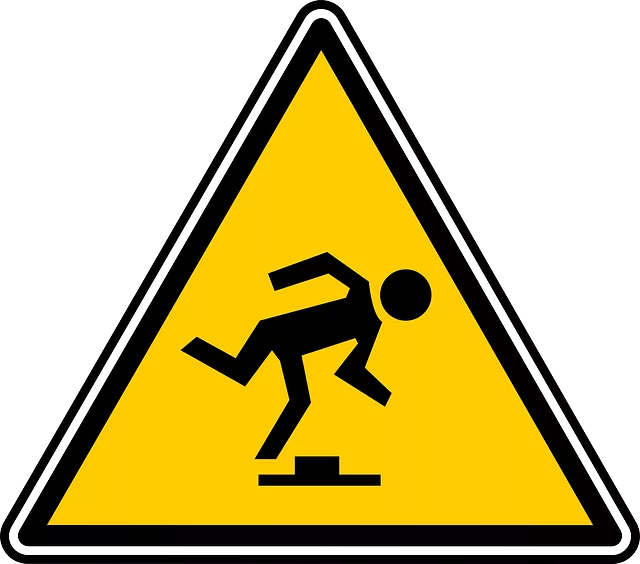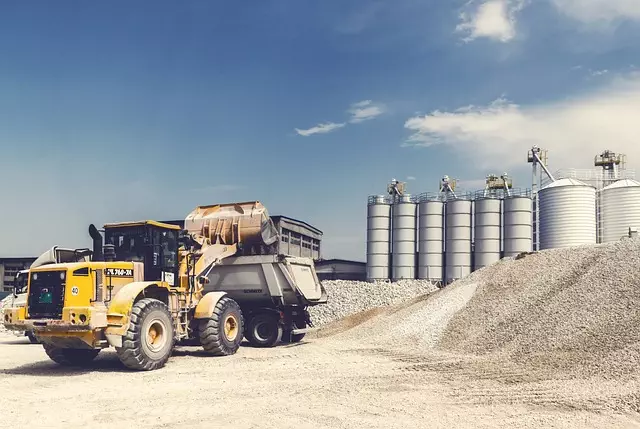Industrial Hygiene is a critical discipline focused on creating safe and healthy work environments. It involves two key steps: hazard recognition and assessment (identifying risks like toxic substances, ergonomic issues, noise) through inspections, data analysis, and employee consultations, followed by exposure monitoring to quantify worker exposure using advanced tools. This data guides resource allocation for risk mitigation strategies, ensuring workplace safety and regulatory compliance. Technology streamlines these processes, enhancing accuracy. Case studies illustrate best practices in efficient resource management, like a manufacturing company that identified hazards through thorough assessments and targeted exposure tracking, optimizing IH programs and setting benchmarks.
In today’s diverse industrial landscape, effective resource allocation for Industrial Hygiene (IH) programs is paramount to fostering safe and productive workspaces. This comprehensive guide delves into the critical components of IH, beginning with understanding foundational principles and advancing through strategic resource management. We explore essential practices like hazard recognition and assessment, exposure monitoring, and technology’s pivotal role in streamlining distribution. Through real-world case studies, we demonstrate successful implementation of resource allocation strategies for robust IH programs.
- Understanding Industrial Hygiene: The Foundation of Safe Workspaces
- Hazard Recognition and Assessment: Identifying Potential Risks
- Exposure Monitoring: Tracking and Mitigating Workplace Hazards
- Strategic Resource Allocation for IH Programs: A Step-by-Step Approach
- Prioritizing Risk Management: Allocate Resources Effectively
- Technology's Role in Streamlining Resource Distribution
- Case Studies: Successful Implementation of Resource Allocation Strategies
Understanding Industrial Hygiene: The Foundation of Safe Workspaces
Industrial Hygiene is a critical discipline that forms the very foundation of creating safe and healthy workspaces. It involves the scientific analysis of various elements within a work environment to identify, evaluate, and mitigate risks associated with potential hazards. By focusing on these aspects, industrial hygiene professionals play a pivotal role in preventing occupational diseases and injuries. The process begins with thorough hazard recognition and assessment, where every aspect of the workplace is meticulously scrutinized for any potential dangers. This includes evaluating physical, chemical, biological, and ergonomic factors that could expose workers to risks.
Once hazards are identified, exposure monitoring becomes an essential step. It involves measuring and assessing the levels of hazardous substances or conditions present in the air, water, or other work areas. Regular monitoring ensures that exposure limits are not exceeded, providing a safe threshold for workers’ protection. This data-driven approach allows for informed decisions regarding resource allocation, ensuring that necessary equipment, training, and safety protocols are implemented to manage identified risks effectively.
Hazard Recognition and Assessment: Identifying Potential Risks
Industrial hygiene programs rely heavily on effective hazard recognition and assessment to ensure worker safety. The initial step involves identifying potential risks within a workplace setting, which can include various hazards such as toxic substances, ergonomic issues, or noise exposure. This process requires a comprehensive understanding of the operations and processes taking place in the facility. Industrial hygiene professionals conduct thorough inspections, review historical data, and consult with employees to gather insights into possible health hazards.
Proper hazard recognition is followed by a meticulous assessment to prioritize and mitigate risks. Exposure monitoring plays a crucial role here, involving the use of advanced tools and techniques to measure and evaluate worker exposure to identified hazards. This data-driven approach allows professionals to implement targeted strategies, ensuring that resources are allocated efficiently to address the most significant threats first, ultimately contributing to a safer work environment.
Exposure Monitoring: Tracking and Mitigating Workplace Hazards
Industrial hygiene plays a pivotal role in ensuring safe and healthy work environments, especially for programs that involve hazardous materials or processes. Exposure monitoring is a critical component of industrial hygiene, focusing on identifying and mitigating workplace hazards. This process involves systematic tracking and assessment of employee exposure to various risks, from chemical substances to noise and ergonomic factors. By implementing robust exposure monitoring practices, organizations can proactively manage potential health issues.
Through regular sampling and analysis of air quality, noise levels, and other environmental factors, employers can accurately recognize and quantify employee exposure to hazards. This data-driven approach enables informed decisions about necessary control measures. For instance, if exposure monitoring reveals elevated levels of a hazardous substance, immediate actions can be taken to improve ventilation, implement personal protective equipment (PPE), or substitute safer alternatives, thus creating a safer working condition and protecting the well-being of the workforce.
Strategic Resource Allocation for IH Programs: A Step-by-Step Approach
Strategic resource allocation is a critical aspect of successful Industrial Hygiene (IH) programs. To effectively manage resources, organizations should adopt a structured approach that begins with hazard recognition and assessment. This involves thoroughly identifying and evaluating potential risks within the work environment, considering factors like chemical exposures, ergonomic issues, or noise levels. By systematically analyzing these hazards, companies can prioritize areas requiring immediate attention and allocate resources accordingly.
Once hazards are identified and assessed, the next step is to implement exposure monitoring strategies. This process quantifies employee exposure to identified risks, providing valuable data for informed decision-making. Based on monitoring results, organizations can then strategically distribute resources—be it personnel, equipment, or funding—to mitigate risks, implement control measures, and ensure compliance with relevant regulations. Regularly reviewing and updating this allocation strategy ensures that IH programs remain agile, proactive, and aligned with evolving workplace dynamics.
Prioritizing Risk Management: Allocate Resources Effectively
Prioritizing Risk management is a cornerstone in effective resource allocation for Industrial Hygiene (IH) programs. By focusing on hazard recognition and assessment, organizations can identify potential risks and determine their severity. This process involves meticulously evaluating work environments, job tasks, and materials to pinpoint hazards that may pose significant threats to worker health. Once identified, these hazards are categorized based on their potential impact, leading to informed decisions about resource allocation.
Effective resource distribution then becomes a strategic exercise in which monitoring exposure levels takes center stage. Exposure monitoring involves the use of various tools and techniques to measure and evaluate worker exposure to hazardous substances. This data-driven approach ensures that resources are allocated efficiently, with a strong emphasis on mitigating risks and promoting safe working conditions. By integrating hazard recognition and assessment into resource allocation strategies, organizations can proactively manage industrial hygiene concerns, enhancing overall workplace safety and well-being.
Technology's Role in Streamlining Resource Distribution
In the realm of industrial hygiene (IH) programs, technology has emerged as a powerful tool to revolutionize resource allocation and distribution. By leveraging advanced digital solutions, organizations can streamline processes that were once manual and time-consuming. This transformation is particularly beneficial for efficient hazard recognition and assessment, enabling professionals to identify potential risks and evaluate worker exposure with enhanced accuracy.
Digital platforms equipped with specialized software enable continuous and real-time monitoring of various environmental factors, including air quality and chemical exposures. These tools facilitate data collection and analysis, making it easier to pinpoint sources of hazards and take immediate corrective actions. Through automation, technology also ensures that exposure monitoring becomes more consistent and comprehensive, ultimately contributing to improved workplace safety and the overall success of IH programs.
Case Studies: Successful Implementation of Resource Allocation Strategies
Successful implementation of resource allocation strategies for Industrial Hygiene (IH) programs often hinges on thorough case studies that demonstrate best practices. One such example involves a manufacturing company that faced challenges in allocating resources effectively to address various hazards. Through a meticulous hazard recognition and assessment process, they identified multiple sources of exposure among workers. This led to the prioritization of risks based on severity and potential impact.
The company then implemented an exposure monitoring system, utilizing advanced technologies to track airborne contaminants. By analyzing these data, they could precisely allocate resources towards mitigating high-risk areas. For instance, they directed specialized IH teams and equipment to hot spots, ensuring that interventions were targeted, efficient, and in line with industry standards. This strategic approach not only improved workplace safety but also optimized resource utilization, setting a benchmark for other organizations looking to enhance their IH programs through efficient resource allocation.


